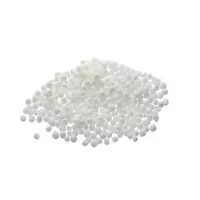Sago

Under such an exotic name, it is customary to understand small cereals of white color, which in Soviet times belonged to rather trivial products and could be purchased in almost every store. To date, the sago, unfortunately, turned out to be an undeservedly forgotten product and fell into the category of curiosities.
By the way, this cereal is produced from the starch of the stem of the saga palm, which mainly grows in India, New Guinea, Malaysia and the islands of Southeast Asia. There, the indigenous population consumes sago and dishes based on this cereal daily. The age of the saga palm tree is not healthy - after it gives people its fruits, the plant begins to dry and dies. That is why it is customary to cut down the sago palm even before the start of the flowering period, when young trunks are still full of useful starch.
The palm's core is washed and then wiped through a special sieve. The hot metal sheet placed under this sieve helps the resulting starch to transform into grains that can only be thoroughly dried.
From one saga palm, a person extracts about 150 kilograms of sago cereals, and therefore, in places native to this plant, it is not just cut down, but actively cultivated. By the way, sago for the indigenous people of New Guinea is nothing more than rice for the Japanese and Chinese.
It is noteworthy that this cereal is produced not only from sagas, but also from other varieties of palm trees. For these purposes, wax, bast, wine and acrocomy palm trees are well suited, which can be found around the world, but, of course, exclusively in southern countries with a warm climate.
Slavic peoples got acquainted with this unusual cereal about a century ago. True, this sago was not made from palm starch, but from potato or corn. But this is quite understandable, since palm trees are not found in our area. When heat treated, the grains of such sago can increase threefold. But from the inhabitants of Europe, as from fans of everything natural, it is customary to buy real saga flour and make cereals from it on their own. By the way, the sago has a related product - tapioca, which is made from the roots of the tropical cassava shrub.
Despite the fact that sago's own taste is rather weak, but this cereal is able to perfectly absorb the aroma and taste of other products. Thanks to this quality, you can cook a huge number of dishes based on this cereal. Soups, puddings, porridge, syrups - the choice is truly great. Sago can be safely served on the side dish or used as a pie filling, having previously added fresh herbs and fragrant herbs. By the way, one of its excellent properties is the ability of this cereal to make any dish unusually thick, since sago is considered a natural thickener.
sago 335.5 kCal
Energy value of sago (Ratio of proteins, fats, carbohydrates - ju):
Proteins: 16 g (~ 64 kCal)
Fats: 1 g (~ 9 kCal)
Carbohydrates: 70g (~ 280kCal)
Energy ratio (b | y): 19% | 3% | 83%
 Español
Español Français
Français Português
Português Русский
Русский 简体中文
简体中文 繁體中文
繁體中文 日本語
日本語 한국어
한국어 العربية
العربية Türkçe
Türkçe Қазақ
Қазақ Deutsch
Deutsch Italiano
Italiano Українська
Українська
